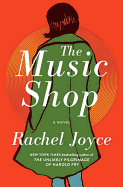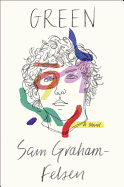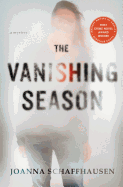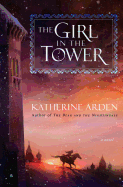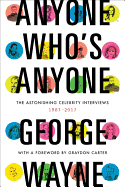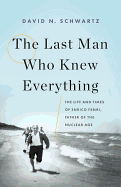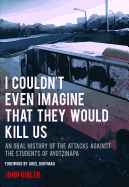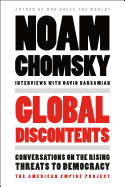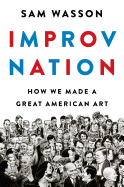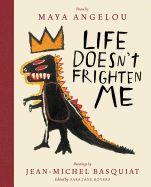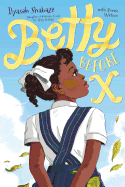_Heidi_Stoner.jpg) |
| photo: Heidi Stoner |
Fiona Mozley was raised in York and has lived in London, Cambridge and Buenos Aires. Her debut novel, Elmet (Algonquin), tells the story of a father and his two children trying to carve out a home for themselves in West Yorkshire; it was shortlisted for the 2017 Man Booker Award. Mozley lives in York, where she is completing a Ph.D. and works at the Little Apple Bookshop.
Elmet is about family, but a specific family that's rather hard to describe. It's also so much more than that. How do you explain the book?
I always tell people it's about a family living on the margins of society in West Yorkshire in the North of England. They build a house for themselves on land they don't own, which brings them into conflict with the local landowner. The community gets behind the family in a kind of collective action to fight against the local landowners, and it comes to a dramatic conclusion. More of a showdown, really. I was somewhat inspired by westerns, so there had to be a showdown.
With so much woven into the narrative, how did you know where to start?
For me, the story is about building this kind of sense of community and themes of questions of the individual versus community versus the natural world. I wanted it to seem as if it was just following a very standard story arc, about this huge strong guy we know as Daddy, but then undercut that and say it's about this strong girl. I wanted to write a book that played with that, our preconceptions about narrative, with who this story was going to be about.
I also had this idea of exploring the relationship between a father and daughter who are very, very physically different, but have a kind of synchronicity or similarity in temperament. Because the book is, in many ways, about people's relationships with their bodies and how they come to terms with their physicality. So I had those ideas, and then the characters of Daddy and Cathy emerged. I put those ideas together, and then the voice of Daniel began to emerge.
The son, Daniel, makes for such an interesting narrative perspective.
I knew that it couldn't be narrated either by Daddy or Cathy, because they're all about being active in the world, doing things and accomplishing things. They're not observers. They're not particularly reflective. So I knew that it had to be somebody else. And Daniel is much more reflective. He's a watcher, so he lends himself to the role of narrator more than the others do, I'd say. I wanted it to be Daniel looking at his father and his sister and wondering what was going on, and what made them tick.
 Both Daddy and Cathy have violence within them, but seem to desire a peaceful lifestyle. Are those contradictory character traits? Is it possible for them to embody both?
Both Daddy and Cathy have violence within them, but seem to desire a peaceful lifestyle. Are those contradictory character traits? Is it possible for them to embody both?
I think there's a lot of frustration in both of them. They both do want a quiet life, and that's why the family choose to live where they do. I suppose one of the themes in the book, though, is that it becomes clear that it's not really possible to live an isolated existence--nor is it necessarily desirable. So it's about these characters being confronted by the world they're trying to escape as much as anything.
You said you were inspired by westerns, but many aspects of the novel reminded me of a fable of sorts.
That's what I wanted to achieve. I knew it was going to have a big, dramatic ending, so I wanted to spend a lot of time showing how lovely this family's life together was. Westerns follow the narrative structure of much older stories. So, yes, I was certainly influenced by medieval literature, myths and legends, and I wanted it to have that feel as well. Especially because Elmet is a place that has a very particular heritage, and I wanted to explore the impact that the history of a place can have on its contemporary inhabitants.
Could you talk about the history of Elmet?
Elmet was one of the last Britannic kingdoms in what is now England. It survived culturally intact through Roman occupation, and it was situated there whilst people were settling from Scandinavia, the Vikings, and Anglo-Saxons from parts of Germany and Denmark. This kingdom of Elmet kept its identity and remained for an amazingly long time before eventually being slotted up.
It's kind of got this mythical presence, something that's a bit separate, kind of hard to get to in a way. The area is in the middle of the country, but it's not a very easy or accessible landscape.
As a debut author, what was it like to learn your book was longlisted (and then shortlisted) for the Man Booker prize?
It wasn't even on my radar at all. I don't think it's something debut authors really think about. There are other prizes for debut authors that you hope and dream about, but the Booker is just really something else. My editor called me a few days before the official announcement and told me I was on the longlist, and it was a bizarre thing to hear. It was obviously really amazing, but I think one of my first questions was, "How?"
It was in at the deep end, then. I hadn't yet had the experience of having my first book published and all of the emotions that that brings. I had it all at once. Which was fun, but it was a lot.
With such a successful debut under your belt, have you started thinking about what comes next?
I'm writing my second book. I started it before I got the publishing contract for Elmet, which I'm pleased that I did. It meant I had some progress before the pressure started with that. It's very different in style and tone, but it also explores issues of land and land ownership, bodies and gender. But very different stylistically. --Kerry McHugh, blogger at Entomology of a Bookworm
Fiona Mozley: Bookseller's Startling Debut Novel
 If, like me, you're somewhat skeptical when it comes to self-help, give Get Your Sh*t Together (Little, Brown, $19.99) by Sarah Knight a go. A self-proclaimed anti-guru and "recovering perfectionist," Knight addresses such topics as ways to manage anxiety, turning negative thinking positive and tackling self-sabotage with wry, chuckle-worthy humor and a practicality that will appeal to those who prefer to dip their toe in the transforming your life pond rather than jumping in naked.
If, like me, you're somewhat skeptical when it comes to self-help, give Get Your Sh*t Together (Little, Brown, $19.99) by Sarah Knight a go. A self-proclaimed anti-guru and "recovering perfectionist," Knight addresses such topics as ways to manage anxiety, turning negative thinking positive and tackling self-sabotage with wry, chuckle-worthy humor and a practicality that will appeal to those who prefer to dip their toe in the transforming your life pond rather than jumping in naked.  Clean Protein: The Revolution That Will Reshape Your Body, Boost Your Energy--And Save Our Planet (Hachette, $27) by Kathy Freston and Bruce Friedrich is particularly useful as we all continue to ponder the importance of protein in our daily lives. Your options go far beyond tofu and meat--and they're tasty, too, so don't be afraid. You might even end up contributing to the planet's health in a positive way. Win-win!
Clean Protein: The Revolution That Will Reshape Your Body, Boost Your Energy--And Save Our Planet (Hachette, $27) by Kathy Freston and Bruce Friedrich is particularly useful as we all continue to ponder the importance of protein in our daily lives. Your options go far beyond tofu and meat--and they're tasty, too, so don't be afraid. You might even end up contributing to the planet's health in a positive way. Win-win! 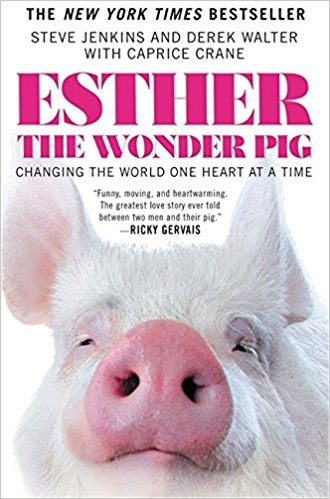 Finally, for those out there who rely on a daily dose of feel-good stories to get through the day (and who doesn't?), Esther the Wonder Pig (Grand Central, paperback, $15.99) is required reading. From unwanted micro piglet to 600 pounds of porcine love and the namesake of the Happily Ever After Esther Farm Sanctuary, this pig's life gives you all the "ah" moments along with a subtle but powerful suggestion that maybe, just maybe, small acts of kindness and pure love can change the world. Not a bad way to start the year. --Stefanie Hargreaves, editor, Shelf Awareness for Readers
Finally, for those out there who rely on a daily dose of feel-good stories to get through the day (and who doesn't?), Esther the Wonder Pig (Grand Central, paperback, $15.99) is required reading. From unwanted micro piglet to 600 pounds of porcine love and the namesake of the Happily Ever After Esther Farm Sanctuary, this pig's life gives you all the "ah" moments along with a subtle but powerful suggestion that maybe, just maybe, small acts of kindness and pure love can change the world. Not a bad way to start the year. --Stefanie Hargreaves, editor, Shelf Awareness for Readers



_Heidi_Stoner.jpg)
 Both Daddy and Cathy have violence within them, but seem to desire a peaceful lifestyle. Are those contradictory character traits? Is it possible for them to embody both?
Both Daddy and Cathy have violence within them, but seem to desire a peaceful lifestyle. Are those contradictory character traits? Is it possible for them to embody both? In Roadside Picnic by Arkady and Boris Strugatsky, a brief, baffling visit by unseen aliens has left a half dozen places on Earth marred by deadly anomalies that defy the laws of physics. The Visitors also left behind their extraterrestrial equivalent of trash, inexplicable objects that can advance human technology or end human life. Access to these Visitation Zones is highly restricted. Roadside Picnic follows Redrick "Red" Schuhart, one of the "stalkers" who brave the Zones to smuggle out alien objects, facing dangers like "hell slime" and "witch's jelly" for "full empties" and "black sparks." Red rummages through alien garbage like ants and squirrels might scavenge the remains of a human family's roadside picnic. The book tracks Red's deteriorating fortunes over several years, punctuated by harrowing, surreal Zone inclusions and the horrifying tolls exacted on stalkers who survive such journeys.
In Roadside Picnic by Arkady and Boris Strugatsky, a brief, baffling visit by unseen aliens has left a half dozen places on Earth marred by deadly anomalies that defy the laws of physics. The Visitors also left behind their extraterrestrial equivalent of trash, inexplicable objects that can advance human technology or end human life. Access to these Visitation Zones is highly restricted. Roadside Picnic follows Redrick "Red" Schuhart, one of the "stalkers" who brave the Zones to smuggle out alien objects, facing dangers like "hell slime" and "witch's jelly" for "full empties" and "black sparks." Red rummages through alien garbage like ants and squirrels might scavenge the remains of a human family's roadside picnic. The book tracks Red's deteriorating fortunes over several years, punctuated by harrowing, surreal Zone inclusions and the horrifying tolls exacted on stalkers who survive such journeys.